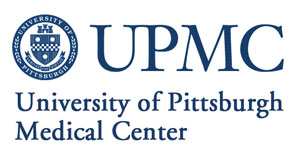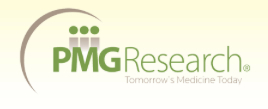A Study to Estimate the Effect Sizes of HRCT Endpoints in Response to Glucocorticoid Induction Therapy in Subjects With Pulmonary Sarcoidosis
| Status: | Recruiting |
|---|---|
| Conditions: | Pulmonary |
| Therapuetic Areas: | Pulmonary / Respiratory Diseases |
| Healthy: | No |
| Age Range: | 18 - 65 |
| Updated: | 5/26/2018 |
| Start Date: | December 8, 2017 |
| End Date: | November 30, 2018 |
| Contact: | Associate Director Clinical Trial Disclosure |
| Email: | clinicaltrialdisclosure@celgene.com |
| Phone: | 1-888-260-1599 |
A Multicenter, Open-Label Study to Estimate the Effect Sizes of HRCT Endpoints in Response to GLUCOCORTICOID Induction Therapy in Subjects With Pulmonary Sarcoidosis
This is a multicenter, single-arm, unblinded/open-label study of the effect size of HRCT
endpoints in response to glucocorticoid induction therapy in subjects with a diagnosis of
pulmonary sarcoidosis who have not received glucocorticoid as initial sarcoidosis therapy (≥
20 mg/day prednisone or prednisolone) or other sarcoidosis therapy for at least 3 months
prior to enrollment. This study will enroll a total of approximately 24 subjects.
endpoints in response to glucocorticoid induction therapy in subjects with a diagnosis of
pulmonary sarcoidosis who have not received glucocorticoid as initial sarcoidosis therapy (≥
20 mg/day prednisone or prednisolone) or other sarcoidosis therapy for at least 3 months
prior to enrollment. This study will enroll a total of approximately 24 subjects.
Optimal development of novel treatments for sarcoidosis requires clinical study endpoints
that efficiently reflect changes in disease activity over short treatment durations. Such
endpoints enable preliminary assessment of candidate drug efficacy in small studies - prior
to exposing large cohorts to experimental compounds in pursuit of registrational data.
This study will accordingly investigate the ways that certain HRCT-based functional
respiratory imaging (FRI) measures can serve as more quantitative and sensitive endpoints
compared to pulmonary function tests to measure drug effect in a short duration small sample
size study in patients with pulmonary sarcoidosis. The study is designed to minimize impact
on sarcoid care that the patient would have otherwise received. Glucocorticoid (≥ 30 mg/day
prednisone or prednisolone) as per local clinical practice of sarcoidosis initial induction
therapy will be taken orally in this study. The glucocorticoid dose may be modified depending
on ongoing assessment as a part of standard local clinical practice.
that efficiently reflect changes in disease activity over short treatment durations. Such
endpoints enable preliminary assessment of candidate drug efficacy in small studies - prior
to exposing large cohorts to experimental compounds in pursuit of registrational data.
This study will accordingly investigate the ways that certain HRCT-based functional
respiratory imaging (FRI) measures can serve as more quantitative and sensitive endpoints
compared to pulmonary function tests to measure drug effect in a short duration small sample
size study in patients with pulmonary sarcoidosis. The study is designed to minimize impact
on sarcoid care that the patient would have otherwise received. Glucocorticoid (≥ 30 mg/day
prednisone or prednisolone) as per local clinical practice of sarcoidosis initial induction
therapy will be taken orally in this study. The glucocorticoid dose may be modified depending
on ongoing assessment as a part of standard local clinical practice.
Inclusion Criteria:
Subjects must satisfy the following criteria to be enrolled in the study:
1. Subject are male or female ≥ 18 and ≤ 65 years of age, inclusive, at the time of
signing the informed consent form (ICF).
2. Subject must understand and voluntarily sign an ICF prior to any study-related
assessments/procedures being conducted.
3. Subject is willing and able to adhere to the study visit schedule and other protocol
requirements.
4. Subject has not received glucocorticoid as initial sarcoidosis therapy (≥ 20 mg/day
prednisone or prednisolone) or other sarcoidosis therapy for at least 3 months or 5 PK
half-lives, whichever is longer, prior to enrollment.
5. Subjects have a diagnosis of pulmonary sarcoidosis:
1. According to the American Thoracic Society/European Respiratory Society/World
Association of Sarcoidosis and other Granulomatous Disorders (ATS/ERS/WASOG)
statement, supported by clinical presentation and biopsy-proven noncaseating
granulomatous inflammation with no alternative cause of the granulomas;
2. With radiographic stage II or III disease;
3. With dyspnea (MRC grade ≥ 1);
4. With an FVC of ≥ 45% and ≤ 80% of predicted normal value at screening;
5. With or without concurrent extra-pulmonary sarcoidosis;
6. Without clinically significant neurosarcoidosis or cardiac sarcoidosis;
7. Without history of resistance or refractoriness to glucocorticoid induction
therapy.
6. Subject is in good health (except for sarcoidosis) as determined by a physical
examination at screening.
a. Stable and mild syndromes associated with normal ageing, that are not expected to
affect safe participation or data interpretation are allowed. Examples include, but
are not limited to, systemic hypertension, hypothyroidism, prostatic hypertrophy, etc.
7. Contraception Requirements:
Must comply with the following acceptable forms of contraception. All FCBP1 must use
one of the approved contraceptive options as described below while participating in
the study and for at least 28 days after the last study visit.
At the time of study entry, and at any time during the study when a FCBP's
contraceptive measures or ability to become pregnant changes, the Investigator will
educate the subject regarding contraception options and the correct and consistent use
of effective contraceptive methods in order to successfully prevent pregnancy.
All FCBP must have a negative pregnancy test at screening and on Days 1, 3 and 5. All
FCBP subjects who engage in activity in which conception is possible must use one of
the approved contraceptive options described below:
Option 1: Any one of the following highly effective methods: hormonal contraception
(oral, injection, implant, transdermal patch, vaginal ring); intrauterine device
(IUD); tubal ligation; or partner's vasectomy; OR Option 2: Male or female condom
(latex condom or non-latex condom NOT made out of natural [animal] membrane [for
example, polyurethane]); PLUS one additional barrier(c) contraceptive sponge with
spermicide.
Male subjects (including those who have had a vasectomy) who engage in activity in
which conception is possible must use barrier contraception (latex or non-latex
condoms NOT made out of natural [animal] membrane [for example, polyurethane]) while
on the study and for at least 28 days after the last study visit.
8. Subject has body mass index (BMI) ≥ 17 and ≤ 33 kg/m2 at screening.
9. Subject has clinical laboratory safety test results that are within normal limits or
acceptable to the Investigator. Platelet count, absolute neutrophil count, and
absolute lymphocyte count must be above the lower limit of normal at screening.
10. Subject is afebrile, with supine systolic blood pressure (BP) ≥ 90 and ≤ 150 mmHg,
supine diastolic BP ≥ 50 and ≤ 90 mmHg, and pulse rate ≥ 40 and ≤ 110 bpm at
screening.
11. Subject has a normal or clinically acceptable 12-lead ECG at screening.
Exclusion Criteria:
The presence of any of the following will exclude a subject from enrollment. If the
result(s) do not satisfy eligibility criteria, subjects will be ineligible to enroll in the
study and will be considered a screen failure. Subjects may be re-screened with the
approval of the medical monitor:
1. Subject has any significant medical condition, laboratory abnormality, neurological
disease or psychiatric illness that would prevent the subject from safely completing
the study. Prior evidence of neurological disease must be documented.
2. Subject has any condition that confounds the ability to interpret data from the study.
3. Subject is a pregnant or a nursing female.
4. Subject has received another interventional investigational drug for sarcoidosis
within the 3 months prior to screening or 5 PK half-lives, whichever is longer*.
5. Subject has clinically significant lung disease, other than sarcoidosis, such as
asthma, chronic obstructive pulmonary disease (COPD), interstitial lung disease (ILD)
or lung cancer.
a. Subject has a history of significant (greater than a wedge) lung resection.
6. Subject is receiving therapy for sarcoidosis associated pulmonary hypertension, or has
an indication for such therapy.
7. Subject has uncontrolled diabetes and other contraindications to glucocorticoid
therapy.
8. Subject has a history of listeriosis, coccidioidomycosis, histoplasmosis,
blastomycosis, treated or untreated tuberculosis or exposure to individuals with
tuberculosis.
9. Subject is an active smoker or has > 10 pack-year smoking history. Previous smokers
must have discontinued smoking for at least 1 year.
10. Subject is unable to perform any study-related procedure or maneuver.
11. Subject has had any biologic anti-tumor necrosis factor (anti-TNF) therapy within the
previous year.
12. Subject has active infection requiring treatment within 30 days prior to screening*.
13. Subject has a positive QuantiFERON-TB Gold tuberculosis test.
a. In case of an indeterminate result, the test may be repeated once. The repeat
result must be negative to permit entry into the study.
14. Subject has active fungal infection (other than candidiasis of the urinary tract*) or
active infection with hepatitis B or hepatitis C or a history of either HCV infection
or chronic HBV infection.
15. Subject has a history of congenital and/or acquired immunodeficiencies (eg, common
variable immunodeficiency, HIV, etc.).
16. Subject has aspartate transaminase (AST), alanine aminotransferase (ALT) or total
bilirubin > 2 x the upper limit of normal at screening (unless the increase is
considered to be due to sarcoidosis by the Investigator and/or Sponsor's medical
monitor).
17. Subject has a serum creatinine level > 1.8 mg/dL (> 159.12 μmol/L)
18. Subject has clinically significant organic heart disease (eg, congestive heart
failure), myocardial infarction requiring initiation or change in medical treatment
within six months prior to screening.
19. Subject has QTcF of > 450 milliseconds or findings on electrocardiogram (ECG) at
screening (eg, an arrhythmia, heart block, etc.) that suggest either significant
cardiac sarcoidosis or significant risk of cardiac adverse event over the duration of
this study.
20. Subject has a history of malignancy within 5 years (except basal cell carcinoma of the
skin that is surgically cured, remote history of cancer now considered cured or
positive pap smear with subsequent negative follow-up).
21. Subject is expecting to have elective surgery in the time interval between screening
and 10 weeks after the last study visit if the surgery would be expected to confound
evaluation of study endpoints or AE assessment.
- Candidate subjects having these conditions may be re-evaluated upon resolution
and entered into the study if all other criteria are met.
We found this trial at
11
sites
Click here to add this to my saved trials
University of Cincinnati Medical Center Opening in 1823 as the country
Click here to add this to my saved trials
University of Iowa With just over 30,000 students, the University of Iowa is one of...
Click here to add this to my saved trials
Click here to add this to my saved trials
Click here to add this to my saved trials
171 Ashley Avenue
Charleston, South Carolina 29425
Charleston, South Carolina 29425
843-792-1414

Medical University of South Carolina The Medical University of South Carolina (MUSC) has grown from...
Click here to add this to my saved trials
University of Pittsburgh Medical Center UPMC is one of the leading nonprofit health systems in...
Click here to add this to my saved trials
Saint Louis, Missouri 63110
Click here to add this to my saved trials
Click here to add this to my saved trials
PMG Research of Wilmington PMG Research of Wilmington has two offices situated in a 1...
Click here to add this to my saved trials



